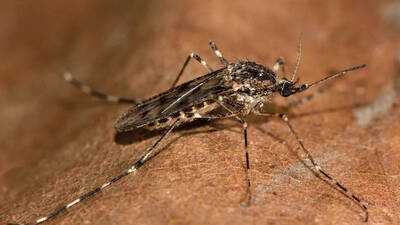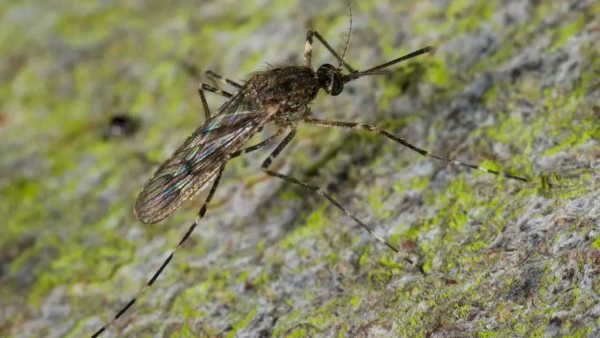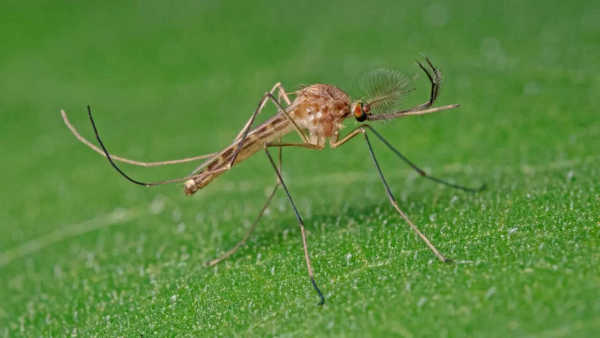
For the first time in history on record, scientists have confirmed wild mosquitoes in Iceland . The insects were discovered in mid-October 2025 in a small town north of Reykjavík, and identified as Culiseta annulata - a cold-tolerant European species. This discovery marks the end of Iceland's status as one of the only mosquito-free places on Earth.
How they were found
An insect enthusiast named Bjorn Hjaltason noticed an unusual “fly” in his garden in Kiðafell, Kjós, around 20-30 km north of Reykjavík. Hjaltason had been using “wine ropes” - strips of fabric soaked in sweetened red wine, a kind of trap that attract moths and other insects - and over several days he collected three specimens that looked different from the usual garden bugs, he shared it in a about this. He contacted Matthías Alfreðsson, an entomologist at the Natural Science Institute of Iceland, who confirmed the finds - two females and one male of Culiseta annulata. The specimens were collected from those wine ropes and confirmed by microscopic inspection.
What species was found and what that means
 Culiseta annulata is not a tropical mosquito. It is a species commonly found across northern and central Europe and is known to tolerate relatively cool climates. Unlike many warm-weather mosquitoes, this species can overwinter as an adult in sheltered places, which helps it survive cold seasons in parts of Europe. Still, finding three specimens does not automatically mean a stable, year-round population exists in Iceland - it does mean, however, that the island’s environment is now at least occasionally hospitable to mosquitoes.
Culiseta annulata is not a tropical mosquito. It is a species commonly found across northern and central Europe and is known to tolerate relatively cool climates. Unlike many warm-weather mosquitoes, this species can overwinter as an adult in sheltered places, which helps it survive cold seasons in parts of Europe. Still, finding three specimens does not automatically mean a stable, year-round population exists in Iceland - it does mean, however, that the island’s environment is now at least occasionally hospitable to mosquitoes.
How they might have arrived

Scientists are cautious about claiming a precise arrival route, but there are plausible explanations. Mosquitoes (or their eggs/larvae) can hitch rides on boats, planes, vehicles, or even in shipments of goods and plant material. As travel and trade increase, accidental introductions become more likely. Another major factor is environment, record-high temperatures and milder seasons can allow insects that once died off in Iceland’s cold springs or autumns to survive long enough to reproduce. In short, a mix of human movement and climate change makes novel arrivals and short-term survival increasingly possible.
Why this is worrying
Ecosystem and nuisance effects: If mosquitoes establish permanent populations, they would change local summertime experiences - more bites, more swatting, and changes in insect-bird food chains. Mosquito larvae also occupy ponds and bogs, where they could alter food webs. Iceland has many shallow ponds and wetlands that could be suitable breeding sites in warmer conditions.
Disease risk: Low for now, but something to watch. Culiseta annulata is not a major carrier of tropical diseases such as malaria, dengue, or Zika. The immediate risk of those tropical pathogens becoming established in Iceland remains low because the climate is still relatively cool compared with regions where those diseases spread. However, as average temperatures rise and seasonal windows lengthen, the overall risk picture for vector-borne diseases shifts. Public-health surveillance will need to watch not just for mosquitoes but for introductions of species that are competent disease vectors.
A sign of climate change in action: Iceland is warming faster than many parts of the Northern Hemisphere. Scientists have long predicted that as the climate warms, insects and other species will expand their ranges northward or into formerly inhospitable islands. The appearance of mosquitoes is an early and visible example of that process - it’s not only a nuisance story but an ecological indicator.
What ordinary people should know and do
Don’t panic: A few mosquitoes do not equal a health crisis. The species found is not known as a major carrier of tropical diseases.
Report sightings: Citizen science helped make this discovery. If people in Iceland see unusual insects, they should photograph and report them to local natural-history institutes or public-health bodies. Early reporting helps scientists detect whether the insects are spreading.
Reduce standing water: Empty buckets, cover barrels, and make sure gutters drain. Small actions reduce potential breeding sites if mosquitoes try to establish locally.
Follow public-health advice: If authorities announce surveillance or preventive steps, follow them.
The discovery of Culiseta annulata in Iceland is a significant indicator - the long-term exception of the island to the mosquito problem has been put to the test in the first place in history. Although the small number of insects does not imply an imminent public-health crisis, it is a simple and concrete demonstration of how a warming earth will alter the distribution of the well-known species. There will be a close observation among scientists on whether these mosquitoes are a one-time situation or the start of a new era in the ecology of Iceland. Further surveillance and public reporting will play a significant role in the months and years to come.
-
West Indies suffer heavy defeat in series decider against Bangladesh

-
Tess Daly and Claudia Winkleman Strictly exit LIVE: Hosts' emotional statements in full

-
Pensions Budget tax raid big update as Treasury issues response

-
Man Utd dressing room thought one player was manager's son due to treatment

-
President Murmu's heartwarming gesture delights Kerala school children
